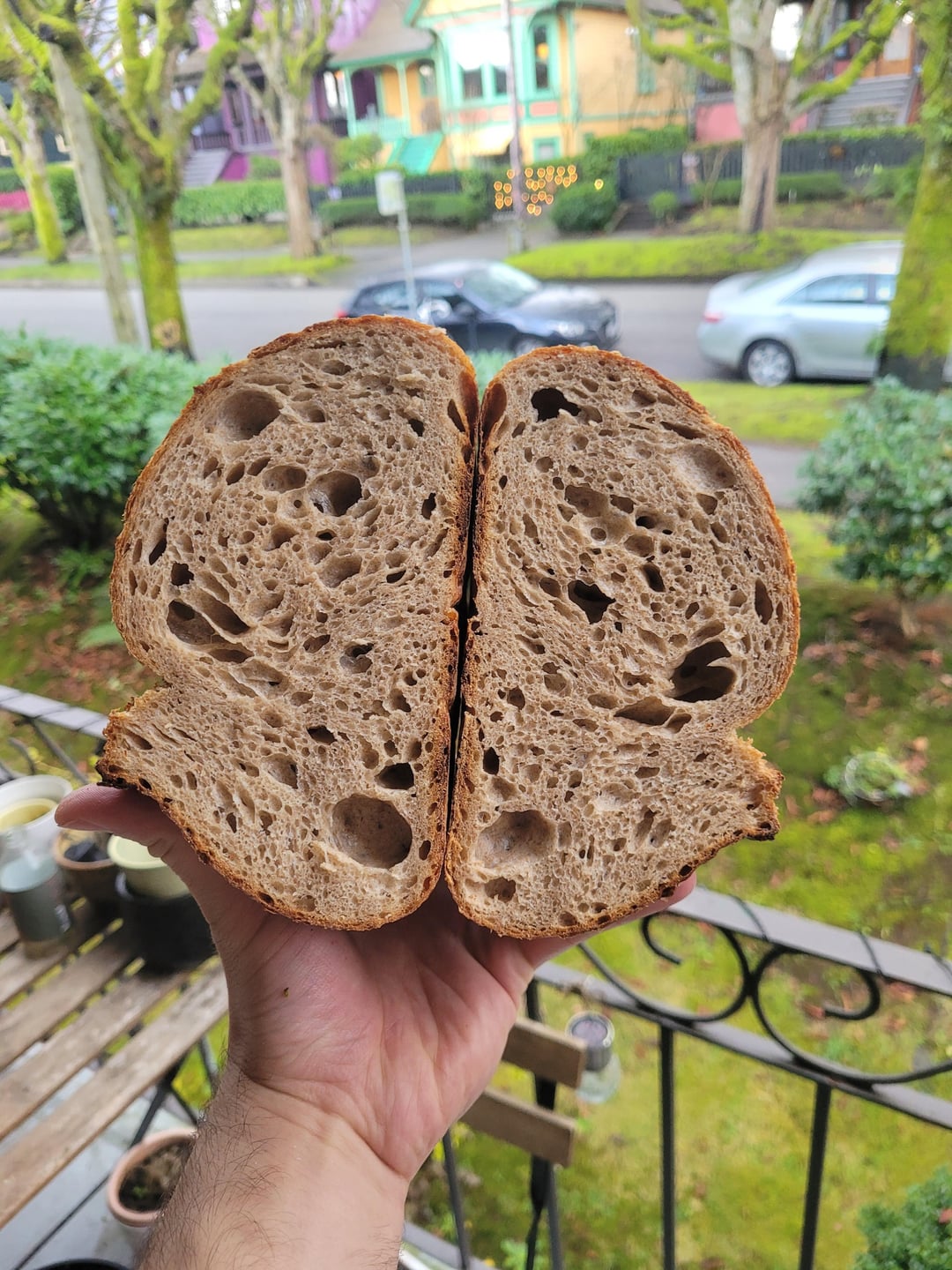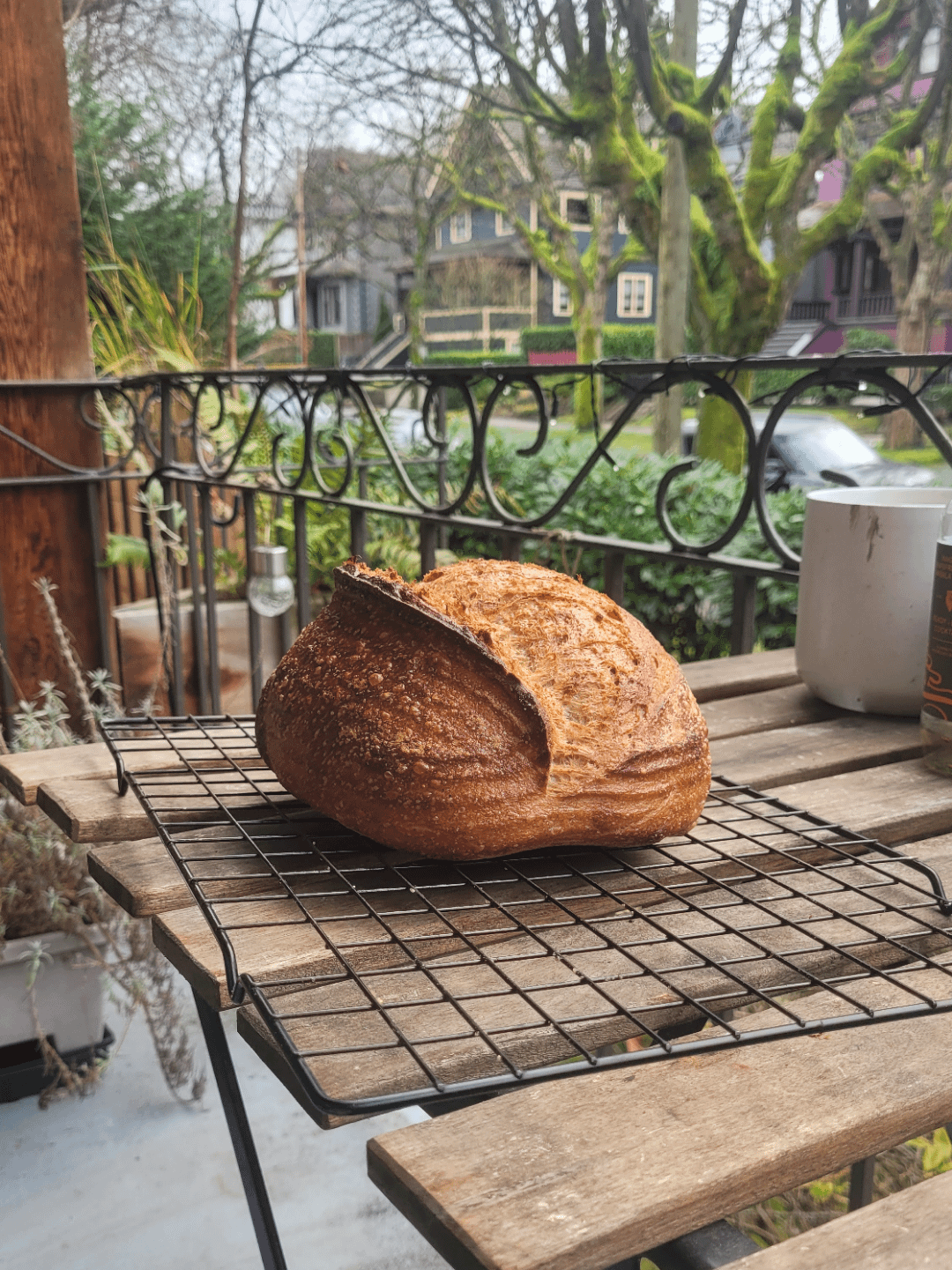

I'd been gifted a bag of high extraction spelt flour I forgot about. I wanted to make the spelt recipe from tartine no.3, but am out of whole wheat flour so I figured let's toss in more spelt. Love how it turned out and the taste of spelt is amazing!
Recipe:
120g strong white flour (30%) 160g high extraction spelt flour (40%) 120g whole spelt flour (30%) 28g wheat germ (7%) 340 water (85%) 10 salt (2.5%) 80 starter (20%)
Method:
Mix everything but salt, wait 30 minutes add salt, wait 30 minutes and laminate, 2x coil folds 45 mins apart, bulk to about 40% increase took about 3:30 at about 80f, preshape and rest 35 minutes, shape and cold proof 18ish hours, bake at 450f 25 minutes covered 25 minutes uncovered
by Calamander9


7 Comments
Looks great.
Now, stop messing around and 100% spelt. You won’t regret it 🙂
What is the significance of spelt? Excuse my ignorance- trying to expand my knowledge of flours.
Hi. Very nice looking loaf. I just started using spelt flour. It adds a whole new dimension to my bread. As you say, nice taste. My last loaf was ⅓:⅓/⅓ SWBF: SPELT: RYE. Turned out to my liking if a bit over cooked! Using new baking approach.
Your loaf if you’ll forgive the critique loss a little over fermented with holed membranes in the larger alveoli and the uneven cell size indicates that it may be a bit under-developed in terms of stretch and fold.
Kneading vs stretch and fold:
Kneading is a ‘power’ stretch and fold, rapidly and repeatedly. I only use such vigorous handling in the mixing phase to adequately achieve a homogenous dough. Thereafter, I adopt stretch and fold techniques much slower and more gentle. These methods allow the dough to do the work you simply direct it. When the dough has had enough, it will tell you. It will stop stretching. At that point, further forceful stretching will only tear the dough. Rest it. For a minimum of a 1/2 hour. In repeat stretches, the point of resist will come earlier until the point where extensibility occurs. At this stage, your dough will hold shape without tearing and without elastic rebound. It is even more important to handle dough with high levels of whole wheat or or rye with extreme tenderness to prevent gluten tears and gas loss.
After a suitable rest period to finish out bulk fermentation. Around 50 % rise I curtail gluten development and go straight to shape, place in banetton (in my case into baking tin), and commence cold retard after a short 1/2 hour rest
Feeling and seeing the dough change and respond is, for me, a large part of the process.
Happy baking
This is beautiful
That looks like there’s cutest little town
OP this looks lovely. I’d be quite happy with that! Most of the lower-gluten loaves tend to have a slightly tighter run, but that is super nitpicky!! I’m after that nutty flavour with spelt. You probably have that, in spades!
Stunning!